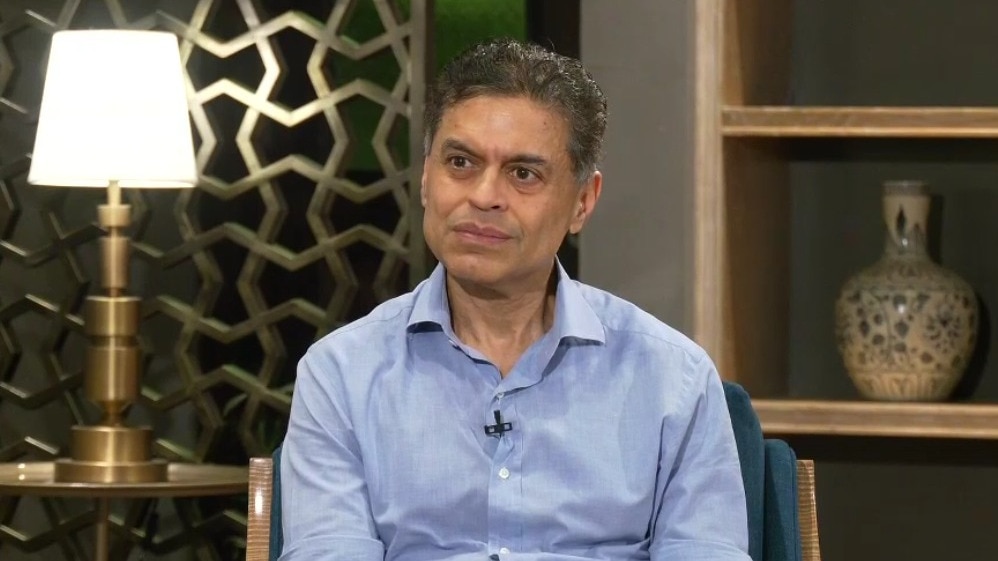With communities still reeling from Hurricane Helene, one of the deadliest storms ever to hit the US, further pain in the form of Hurricane Milton is about to hit Florida. Experts warn such disasters will be deepened if Donald Trump is elected and follows the policy plans of the controversial rightwing Project 2025 manifesto.
Under Project 2025, authored by numerous former Trump officials but disavowed by the former president himself, the federal forecasting of severe storms and aid given to shattered towns and cities would be drastically scaled back. Emergency management officials say the cuts would severely worsen the outcomes from a storm like Helene.
Project 2025 calls for “breaking up and downsizing” the Oceanic and Atmospheric Administration (Noaa), which it calls a primary component “of the climate change alarm industry”. The agency’s climate research is “harmful to future US prosperity” and should be disbanded, the document says.
Noaa houses the Weather Service (NWS) which provides forecasts and analyses on hurricanes and other extreme weather events. Project 2025 calls for the service to “fully commercialize its forecasting operations”.
“They want to pretend climate change isn’t clearly having an effect,” said Andrew Rosenberg, a former Noaa official who is now a fellow at the University of New Hampshire and who called the proposals “ridiculous”.
Introducing a profit-motive into the NWS would undermine commitment to the public interest, said Rosenberg.
“The primary motivation of a business is profit, and do you really want to have things like severe weather forecasts for things like a massive storm be driven by a profit?” Rosenberg asked.
If enacted, the playbook would also radically reimagine the Federal Emergency Management Agency (Fema), ending its federal flood insurance program – the country’s top federal flood insurance provider – and shrinking its disaster aid.
“It would result in greater suffering, more complicated responses and greater risks across the country,” said Samantha Montano, an expert in emergency management at Massachusetts Maritime Academy.
Project 2025 “unequivocally leads to more people dying from a hurricane”, said the Florida representative Jared Moskowitz, a Democrat who was previously a Florida emergency management director.
Tracking the storm
Ahead of disasters, the NWS blitzes first responders and residents; before Helene the agency sent warnings reading “urgent” across the US south-east. Emergency responders compare those warnings and forecasts to floodplains and maps “to determine how people should prepare”, Moskowitz said.
Those warnings are based on data from Noaa’s Asheville, North Carolina-based Centers for Environmental Information, which puts weather into a historical perspective.
“When the forecast for Helene says words like unprecedented, extremely rare and catastrophic, those words are based on the very real climatology records,” said Marjorie McGuirk, an Asheville-based meteorologist who for years worked for the centers.
Noaa’s forecasts of Helene were “absolutely spot on” because they took this climate data into account, McGuirk said.
“Project 2025 pretty much does away with all of that,” she said. “It destroys the integrity of forecasts.”
Emergency responders reportedly regret not taking Noaa’s warnings more seriously ahead of Helene. But counties did receive mandatory evacuation orders, which likely saved lives.
“If it’s privatized, would it still provide forecasts to emergency managers?” Moskowitz asked. “And what if there are business investors involved who have an interest in keeping people in their homes?”
NWS forecasts are currently free to access, but Project 2025 could place forecasts behind a paywall leaving poorer government bodies and communities less prepared.
Though Project 2025 says Americans already rely on private forecasts from companies like AccuWeather, those companies by and large rely on NWS data to inform their own products.
Dismantling the weather service would also disrupt the NWS’s Hurricane Center (NHC), which predicts and tracks tropical cyclones. Project 2025 calls for a “review” of the NHC and for its data to be “presented neutrally, without adjustments intended to support any one side in the climate debate”.
Project 2025 also says the Office of Oceanic and Atmospheric Research (OAR) should be “disbanded” because it is “the source of much of Noaa’s climate alarmism”. But the office conducts research that underpins most weather and forecasting studies nationally.
It’s a “nonsensical” assertion, said Rosenberg. “Climate change is observably changing both the pattern and the intensity of the storms. So do they account for that in their forecasts? Yeah, they better,” he said.
After the storm hits
Project 2025 envisions a radically different role for the Federal Emergency Management Agency (Fema) that is currently dealing with the devastating aftermath of Helene amid a swirl of misinformation and falsehoods, stoked by Trump, that funding is being directed towards immigrants at the expense of disaster-hit communities.
In fact, Fema has said that its disaster relief fund is not being used for any other purpose than to help those in need from storms like Helene. Such a response would be reshaped under Project 2025’s prescriptions, however, with Fema shifted out of the department of homeland security and into the Department of Interior or the Department of Transportation.
Fema would provide much less help to communities under this plan and push responsibility to the states and local governments, with the federal government covering just 25% of the cost of disasters, or up to 75% for “truly catastrophic events”, according to the document. Currently, under the Stafford Act, Fema covers at least 75% of disaster costs once requested, and up to 100% at a president’s discretion.
Project 2025 also demands Fema scrap grants going to states to help them become more resilient to future storms and to privatize the Flood Insurance Program (NFIP), which provides most flood cover to Americans. Ken Cuccinelli, a former Trump official and Project 2025 author wrote that “if we focus them (Fema) more narrowly when they are deployed, they will do a better job”.
Had this shrunken version of Fema been in place ahead of Hurricane Helene and, now, Hurricane Milton, the initial clean-up after the storms hit would remain much the same but the longer-term recovery would “look vastly different” for places already facing years of recovery, said Montano.
“The states couldn’t afford the costs associated with rebuilding roads, bridges and other infrastructure, let alone have funding for individuals and businesses,” she said.
“The non-profit sector wouldn’t be able to make up the difference. It’s a very bad idea.”
Even the initial recovery for hurricane-hit communities would be hampered by less federal support, according to Craig Fugate, former administrator of Fema, who pointed out that just removing downed trees and other debris after Hurricane Michael in 2018 cost five times more than the entire annual budget of the badly-hit city of Mexico Beach, Florida.
“States don’t usually have a lot of spare money floating around so they would have to decide whether to raise taxes or cut programs to make up the funding,” Fugate said. “You’d have to move money from schools, prisons and healthcare to respond to a disaster. Most likely, local governments would go bankrupt.”
Longer term, a reduced Fema role would mean that when vital structures like schools, hospitals and highways are rebuilt they wouldn’t have to adhere to federal guidelines that demand a far stronger resilience standard than many states do, to deal with the reality of fiercer extreme weather driven by the climate crisis.
In North Carolina, for example, the Republican-led state legislature has wound back extreme weather construction requirements, a move that experts say make residents more vulnerable to major storms like Helene.
Private insurers would likely not step in or go immediately bankrupt if they had to fill the void of a removed federal flood insurance scheme, Fugate said, leaving even more people without flood insurance. The federal initiative was set up in the 1960s after private insurers fled the market in the wake of several disastrous floods.
“Just relying on the market wouldn’t make sense – the reason we have the NFIP is because private companies refused to cover flooding,” said Montano. “There’s no evidence there would be a robust and effective private insurance market given the risks we are seeing now. There are absolutely problems with the NFIP but we need to fix the program we have.”
Former Fema executives agree that the agency does need reform but they spoke in terms of retooling it to an era of climate crisis and more intense storms unknown when it was formed in 1979. The growing cavalcade of disasters has been underlined by Helene’s impact being quickly followed by Hurricane Milton’s expected landfall in Florida.
“We are facing unprecedented times, we are getting these disaster declarations every other day this year,” said Anne Bink, who headed Fema’s response and recovery operation until May this year.
“Fema is needed more than ever by state and local governments because of the increased pace in disasters. We can’t just build back like before, we really need to invest in resilience.”
Neither the Heritage Foundation, the main author of Project 2025, nor the Trump campaign responded to questions about disaster forecasting and response.

 1 month ago
1 month ago
















